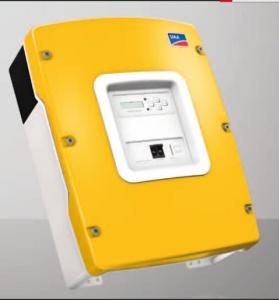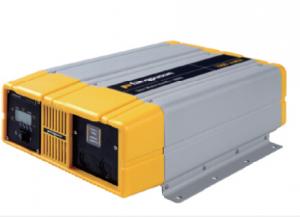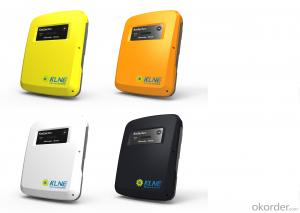Off Grid Solar Inverter 48v
Off Grid Solar Inverter 48v Related Searches
Led Light Bulbs For Ceiling Fixtures Led Lamps For Ceiling 42 In Ceiling Fan With Light Parts For Light Fixtures Light Projector For Christmas Grill With Led Light Bar Hanging Lights For Kitchen Bar Ceiling Lights For Sitting Room Ceiling Brackets For Lights Ceiling With Led LightsHot Searches
Aluminium Wire Mesh Manufacturers India Ceiling Fan Lowest Price Aluminium Scaffold Planks Sale Aluminium Walkway Mesh Prices Aluminum Bar Stock For Sale High Mast Light Price List Solar High Mast Light Specification High Mast Light Specification 6061 Aluminum Bar Stock Price Aluminum Bar Stock Price Stage Light Price Solar Inverter Fault Light Led Light Manufacturers Aluminum Round Bar Stock Sizes Aluminum Round Bar Stock Near Me Ceiling Fan Lowest Price Aluminum Flat Bar Stock Near Me Aluminum Bar Stock Sizes Aluminum Bar Stock Suppliers Aluminum Bar Stock Near MeOff Grid Solar Inverter 48v Supplier & Manufacturer from China
Okorder.com is a professional Off Grid Solar Inverter 48v supplier & manufacturer, offers integrated one-stop services including real-time quoting and online cargo tracking. We are funded by CNBM Group, a Fortune 500 enterprise and the largest Off Grid Solar Inverter 48v firm in China.Hot Products
FAQ
- A solar inverter can handle variations in solar panel tilt and orientation by continuously adjusting its output voltage and current to match the changing conditions. It does this through a process called maximum power point tracking (MPPT), which optimizes the energy output of the solar panels by finding the point where the panels generate the maximum power. By dynamically adjusting the voltage and current, the solar inverter ensures that it operates at the optimal point, regardless of the tilt or orientation of the panels. This allows for efficient energy conversion and maximizes the overall power generation from the solar system.
- A solar inverter handles reactive power by using power factor correction techniques. It actively manages the flow of reactive power between the solar panels and the grid, ensuring that the power factor remains close to unity. This helps to optimize the efficiency and performance of the solar system, while also maintaining the stability of the grid.
- Yes, there are some disadvantages of using a solar inverter. One major disadvantage is the initial cost of purchasing and installing the inverter, which can be relatively high. Additionally, solar inverters are susceptible to damage from power surges or lightning strikes, which can result in costly repairs. Furthermore, solar inverters require regular maintenance to ensure optimal performance, which can add to the overall cost. Lastly, solar inverters can produce a humming noise during operation, which may be a nuisance in certain environments.
- Yes, a solar inverter can be used with a wireless communication system. Solar inverters convert the direct current (DC) generated by solar panels into alternating current (AC) that can be used to power electrical devices. Wireless communication systems typically operate on AC power, so a solar inverter can be employed to convert the DC power generated by solar panels into AC power for the wireless communication system. This allows for the use of renewable energy to power the wireless communication system, reducing reliance on traditional energy sources.
- Yes, a solar inverter can be integrated with a smart home system. This integration allows for monitoring and controlling the solar energy production, as well as optimizing energy usage and managing the overall efficiency of the system.
- Yes, a solar inverter can be used with a solar-powered telecommunications system. A solar inverter is responsible for converting the direct current (DC) generated by solar panels into alternating current (AC) that can be used to power electrical devices. In the case of a solar-powered telecommunications system, the solar inverter would convert the DC power generated by the solar panels into AC power to effectively operate the telecommunication equipment.
- The role of a solar inverter in a community solar project is to convert the direct current (DC) electricity produced by solar panels into alternating current (AC) electricity that can be used by homes and businesses in the community. It ensures that the solar energy generated is compatible with the existing electrical grid, allowing for seamless integration and distribution of clean energy to the community.
- Solar inverters have specific installation requirements that should be taken into consideration. Here are some important factors to keep in mind: 1. Placement: To ensure optimal performance and durability, solar inverters should be installed in a well-ventilated area, away from direct sunlight and potential heat sources. Additionally, they should be placed in a clean and dry environment. 2. Mounting: Solar inverters can be mounted on walls or placed on flat surfaces. However, it is crucial to follow the manufacturer's guidelines for proper mounting techniques and ensure that they are securely fastened. 3. Wiring: Adequate wiring is essential for connecting the solar panels to the inverter and the inverter to the electrical grid. The wiring should be appropriately sized based on the system's specifications to handle voltage and current requirements without any voltage drop or overheating. 4. Electrical connections: The inverter should be connected to a dedicated circuit breaker or fuse in the main electrical panel. This circuit breaker or fuse must be properly sized to protect the inverter and the electrical system from potential hazards. 5. Clearances: Specific clearances are required to ensure proper ventilation and prevent overheating of solar inverters. The manufacturer's guidelines should be followed to determine the necessary clearances around the inverter. 6. Monitoring and safety devices: Certain inverters may require additional monitoring and safety devices, such as surge protectors, arc fault circuit interrupters (AFCIs), or rapid shutdown devices. These devices should be installed according to the manufacturer's instructions and local electrical codes. 7. Compliance with regulations: Compliance with local electrical codes and regulations is crucial during the installation of solar inverters. This may include obtaining necessary permits and inspections to ensure a safe and compliant installation. To ensure that all specific requirements are met for your particular system, it is highly recommended to seek guidance from a professional solar installer or electrician who has expertise in solar inverter installations.













































